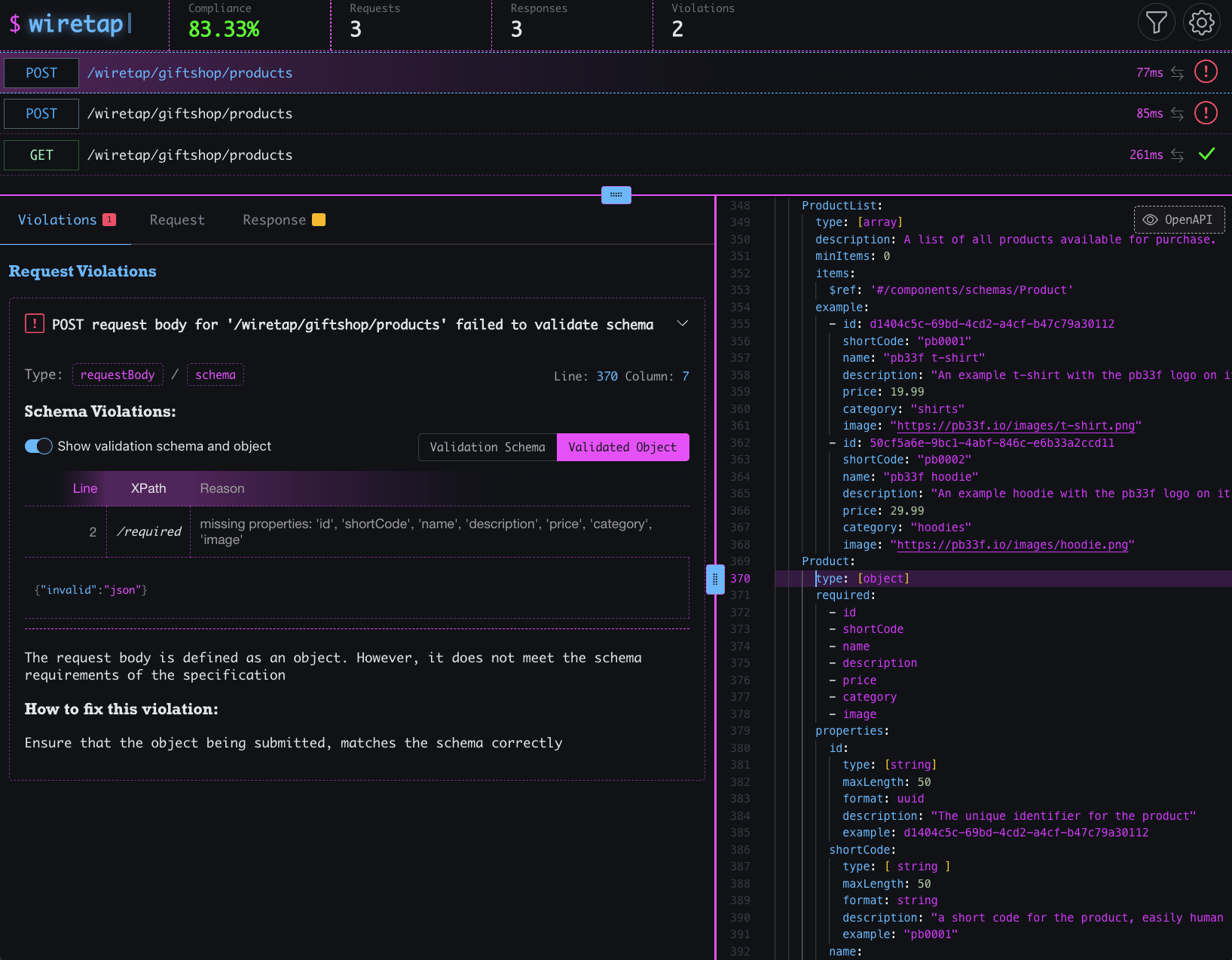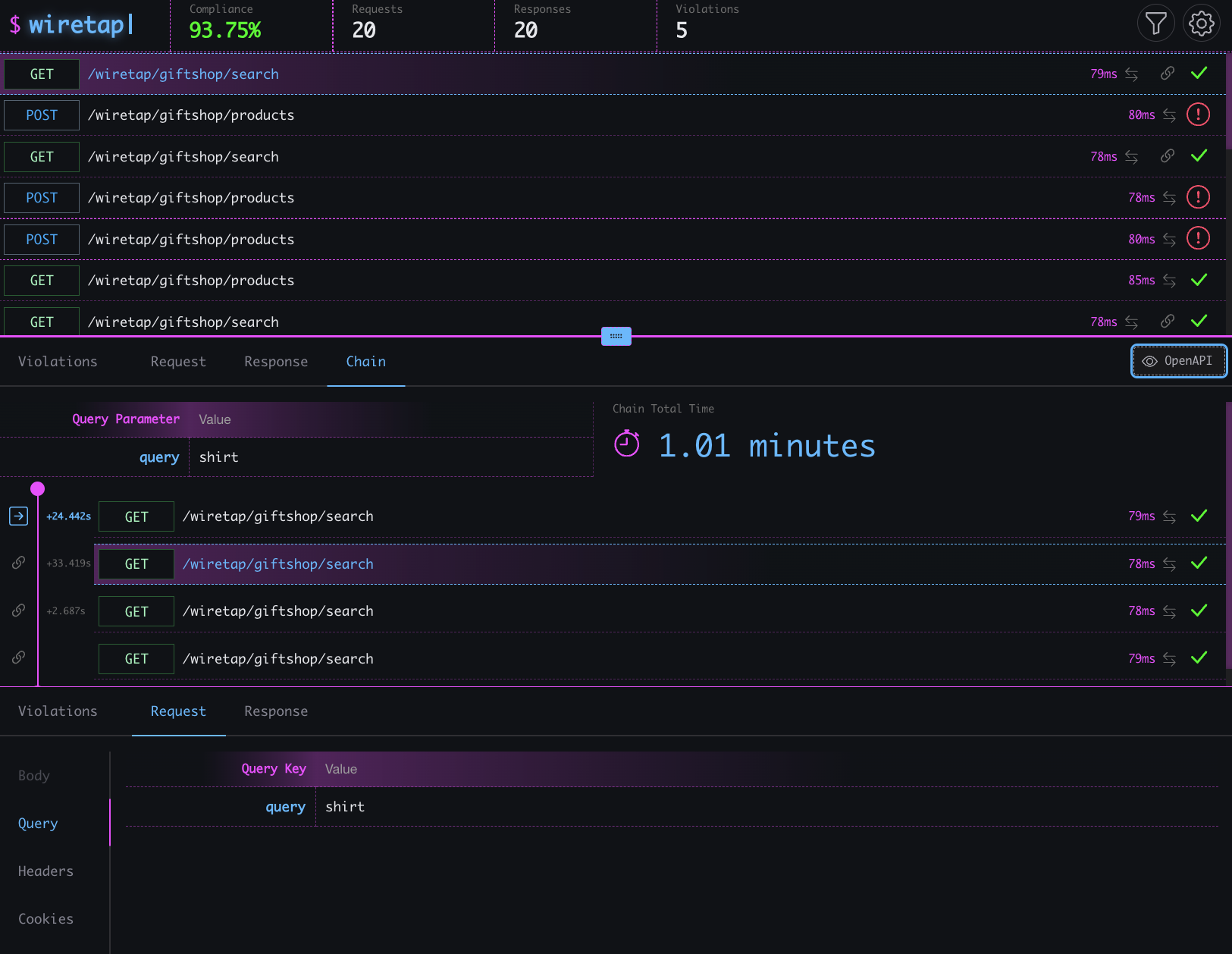
If you know nothing about OpenAPI or don’t care about developer experience, engineering tools, or APIs, I’d skip this article as It will bore the shit out of you.
Now, if you do care about sexy productivity tools for developers, then read on. I have something to share with you.
But before I do, let me ask you three questions:
Question 1:
- Do you know if your UI/client sends the correct data to your backend/API?
Question 2:
- Do you know if your backend/API sends the correct data to your UI/client?
Question 3:
- Can you prove it?
Bonus question:
- Can you prove it without having to modify your code?
I will bet that you said no to most of the questions.
If your answer was yes to all the questions. Well done, you’re kicking ass. Thanks for stopping by. Have a great day, and hack code!
If any of your answers were no, Would you like them to be yes?
How to eavesdrop, a quick guide
The only way to know what two computers say to each other, without adding code, is to listen in on the conversation.
We have to tap into the raw wires. We must sniff the traffic.
Wireshark / Ethereal has always been my go-to for this type of work, particularly when reverse engineering software.
However, determining if a client or server complies with an API Specification is a whole level above the raw packets sent over HTTP. The concepts are much higher, and a stack of protocols exists above the low-level packets flying around the wire.
HTTP is a simple protocol, but payloads can be absolutely anything.
Knowing if those payloads are valid requires a whole different set of tools that understand HTTP traffic and can validate it’s compliant with an OpenAPI specification.
Introducing wiretap
During the spring of 2023, I noticed some problems when talking to my Splunk engineers across the Security organization.
The first was that there needed to be a better solution to validate a client and server OpenAPI compliance without middleware, code changes, or adding new infrastructure.
The second was that webpack devServer is fine for small UI projects but chokes to death when it comes to large-scale enterprise applications that frequently make many API calls.
I watched UI engineers get frustrated with the poor performance when running local development.
What we needed was more power. We needed some b33f.

Hacking code is my passion. So when an opportunity arises to build something that mutates one tool’s existing functionality to serve another purpose - I can’t resist it. It’s like a dog whistle to me.
Building the batteries
To validate OpenAPI specifications, we need a tool that can understand OpenAPI specifications and then know how to validate HTTP requests and responses against them.
libopenapi could handle the first requirement. Its core functionality is just that; however, it didn’t know how to validate anything and could not validate HTTP requests and responses.
Introducing libopenapi-validator
An extension for libopenapi that allows developers to validate schemas, parameters, requests, and responses directly from an HTTP request or response.
I spent over a month building that in the mornings and weekends because you must take the time to craft something properly to do something right.
Now, we have a tool that can do the validation. We need another device that sniffs traffic and hosts all the application’s business logic.
Introducing the ranch
Well, not really. You see, the ranch is a hard fork of transport. A project I architected from the ground up when I worked at VMware.
I wanted to make significant changes, add new functionality, and rip out stuff I didn’t like - but I was no longer in control of the code and didn’t work for the company anymore.
So, as is my right (as is everyone on earth), I hard-forked the public code and renamed the project ranch.
Why ranch?
A ranch is where the cowboys live and work. It’s our home. ranch is a fundamental base architecture for a much larger landscape. It’s not just a message-bus architecture. It’s so much more and serves as the foundational platform for wiretap.
Another problem I also wanted to solve is how to break apart some of the transport functionality into a much smaller, cleaner, and usable format.
Introducing saddlebag
Ta-da! I know, so many introductions - it’s like attending your fiance’s Thanksgiving dinner for the first time.
saddlebag is an ultra-lightweight, super simple state management library
for JavaScript applications. Designed around the concept of bags that contain anything, anyone can listen for updates
on anything in the bag or everything in the bag.
saddlebag allows wiretap to update the UI application state in one place, and everything reacts to that single source of truth.
Simple, effective, tiny, and blazing fast.
Bringing sexy back
Doesn’t every single developer or business tool out there feel the same?
Safe, boring, templated, corporate?
It does to me, anyway, which makes me feel sad. I want energy and fun.
I want vibrancy. I want fizz. So, as with all pb33f tools, it took on our neon pink and blue retro style. Our neo-console experience, but in a browser with pizazz.
As I was building out the UX for wiretap. I asked developers what they wanted from a tool like this.
I asked everyone during frequent reviews about how they felt the experience shaped up, what was missing, and what it could do better.
What started as an OpenAPI compliance tool became a tool chest of UI to API diagnostics. The team kept throwing up, “What if it could also…” minor enhancements and features that make diagnosing how a UI is using an API easier and faster.
Turning up the power
Oskari Rautinen turned up the heat nonchalantly one morning in June.
“Oh, we need it to also re-write paths, drop and modify headers, inject authentication, and add variables.”
No fucking problem, mate.
Bish, bosh, done! A week later, It was all done: a drop-in replacement for webpack devServer and a supercharged API diagnostics toolkit rolled into one!
After a few small automation and some harnessing changes - wiretap has entirely replaced webpack devServer as the local development UI hosting tool. It is a seamless drop-in replacement.

Try it out for yourself
Take a spin through the quick start guide for wiretap, from installing it to running against the toy giftshop API and witnessing API compliance violations.
Video walkthrough
Can’t or won’t download anything and have a few minutes spare? If so, watch the video walkthrough of the tool that showcases the core features and how to use it.
Or just check out the wiretap docs.
What’s next for wiretap?
Here are some of the ‘what if…’ conversations with my engineers.
These are my customers. They are my why, which drives the what of wiretap and all the pb33f tools I create.
So what if wiretap could also:
- Simulate chaos with an API?
- Replay sessions?
- Export sessions in a headless way?
- Handle multiple specs?
- Support WebSocket proxying?
- Support AsyncAPI?
No fucking problem, mates.
